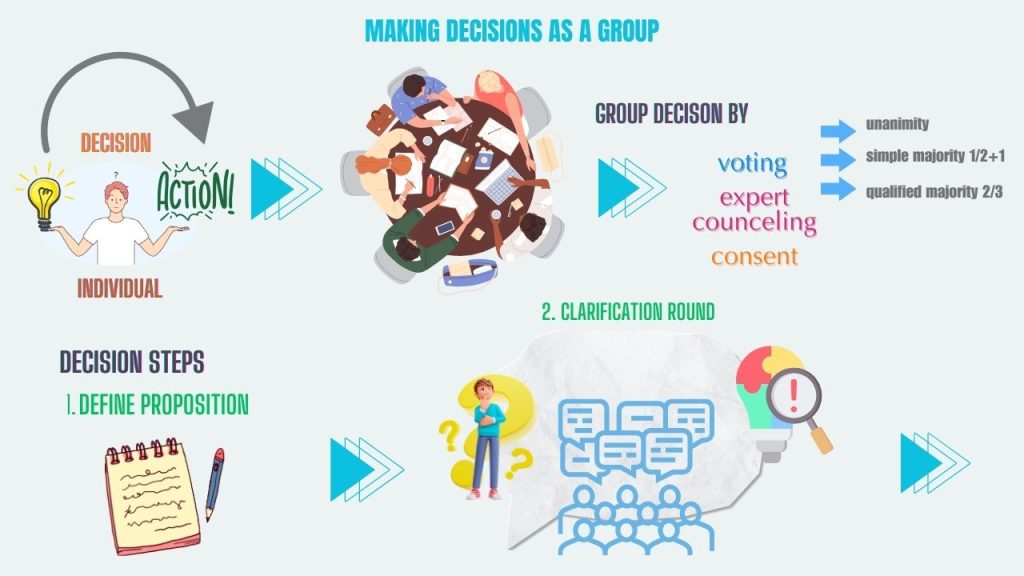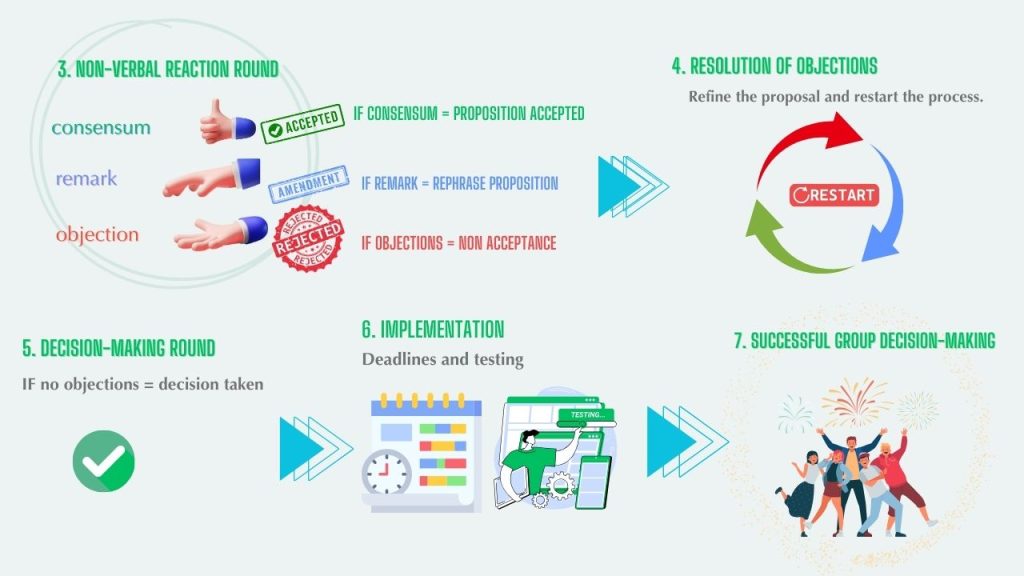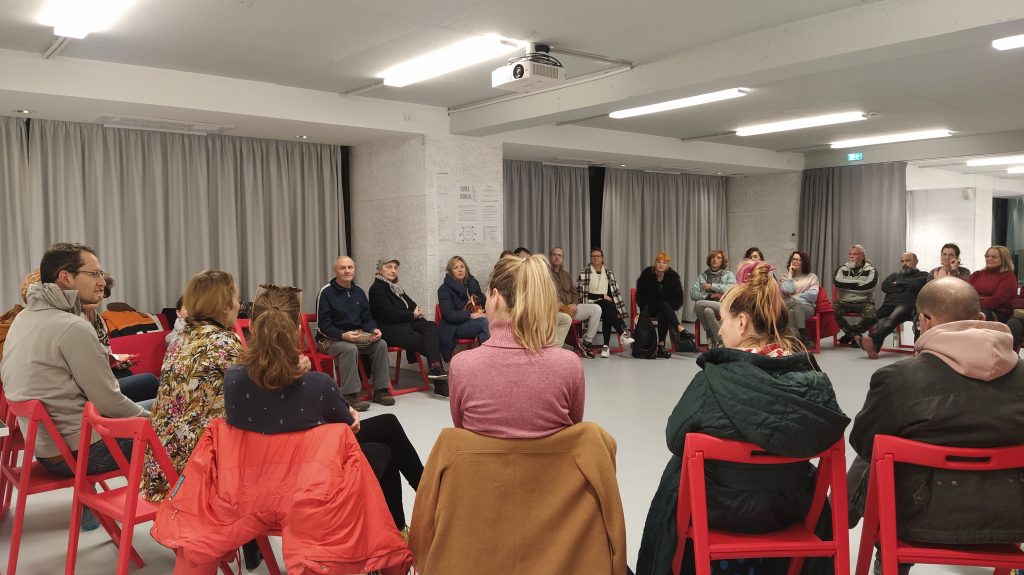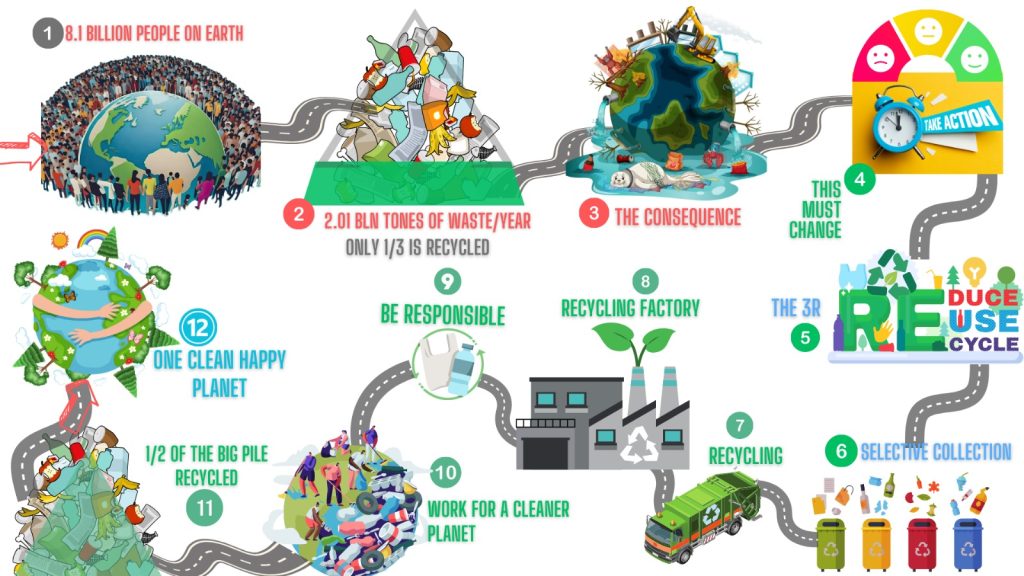Duration: 2 sessions of 45 minutes each
Effective group communication and decision-making are crucial for reaching objectives. In this lesson, students will explore various decision-making techniques and will have the opportunity to practice the consent decision-making method. This particular approach allows everyone involved to participate in the decision-making process and addresses certain challenges associated with other methods.

The decision-making method known as “Decision-making by consent” was developed as part of the sociocracy movement.
Sociocracy is a management method that focuses on equality, the involvement of all members, and making decisions through consensus. It was created in the mid-20th century in the Netherlands by Gerard Endenburg, a Dutch engineer and entrepreneur. The key features of sociocracy include:
Sociocracy is utilized in various kinds of organizations, such as businesses, non-governmental organizations, schools, and communities. The objective is to establish a more efficient, transparent, and equitable method of management, enabling all members to participate in decision-making and ensuring that their voices are both acknowledged and respected.

The goal of this lesson is to train students and teachers to adopt and simply apply the consensus decision-making method.
Introduction

Exercise: Round
Exercise: Decision making by consent
The leader or facilitator introduces the consent decision-making method and explains the non-verbal communication signals to be used during the exercise:
NOTE: In order to be accepted, a proposal does not need to be “perfect” in the sense that it is the ideal proposal for all group members. It should be such that it is acceptable to everyone and good enough that everyone who decides “can live with it”, that they have no objections to it and that they are willing to try it.
If there are no objections, a decision is made.
Here you can find nuggets that can help you implement the lesson.

You can download and print the card.